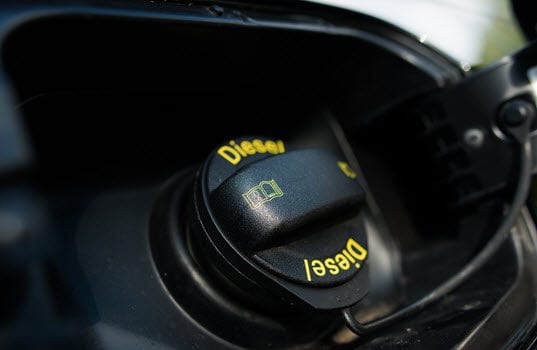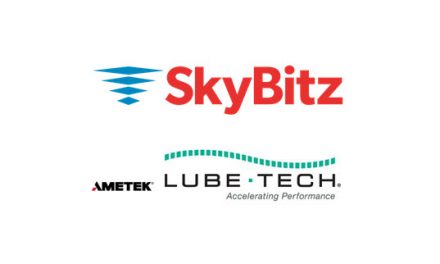“Fueled for Thought” By Joe O’Brien, Source North America Corporation
Having a diesel-powered car 30 years ago was the choice of a determined and loyal minority of owners, as most folks decided not to endure the noise and smells of a diesel engine for their family vehicle. But today, spurred by tighter federal emissions regulations, diesel technology has significantly cleaned up its act to become a respectable, dependable power source that is showing great potential. If consumers fully embrace this potential, clean diesel could become a dominant player on retail forecourts.
The Dark Horse of the Forecourt
Driven by the Environmental Protection Agency’s regulations to reduce emissions, U.S. diesel — and the technology used to burn it — has undergone a significant transformation. As a result, today’s ultra-low-sulfur diesel (ULSD) contains 97% less sulfur, which has reduced soot emissions from diesel-powered vehicles and equipment by 10%. The Diesel Technology Forum is reporting that, as a result of the emissions changes, 37% of trucks (model year 2007 or later, Class 3 to Class 8) produce almost zero particulate matter and nitrogen oxide emissions. These innovations have yielded diesel vehicles that not only reduce carbon pollution, they lead the pack in terms of fuel efficiency.
Previously viewed as a fuel used primarily for industrial applications, many diesel pumps were relegated to low-traffic areas of a fuel site. But today’s diesel is no longer the ugly stepchild of the fuel island — it’s mingling on the forecourt with the other mainstream fuels as retailers try to meet the growing demand from consumers who have warmed to diesel’s aggressive fuel economy. European drivers have already embraced diesel, with the fuel comprising about half of all passenger vehicles in Europe. Although, diesel only accounts for less than 1% of U.S. passenger vehicles, automobile manufacturers are responding in kind by adding more diesel-powered offerings to their fleets. A 2014 Fuels Institute report projected that U.S. diesel sales of light-duty vehicles will increase from a 4% market share in 2010 to 10% in 2020 and rise to 14% by 2030.
Clean diesel brings many financial benefits to consumers. As a petroleum-based fuel, diesel has the highest energy density, meaning that relative to gasoline, clean diesel offers 113% of the energy of one gallon of gasoline to deliver 20% to 40% more miles per gallon than gasoline. To take that thought one step further, the Fuels Institute extrapolated diesel and gasoline’s energy density and pricing data over the course of 20 months in a 2014 report to evaluate the cost-benefit of both fuels. The diesel fuel actually averaged $0.199 lower than gasoline. And because diesel engines compress the fuel to create ignition (as opposed to gasoline engines which use a spark), diesel engines must be built more robustly than their gasoline counterparts to withstand the stresses of compressing the fuel. As such, diesel engines typically offer substantially longer service life.
The High Price of Fuel Economy
While diesel has come a long way, it still has several challenges to overcome. And to some extent, two of diesel’s key benefits may be what is preventing it from dominating the marketplace.
The Diesel Technology Forum reports that clean diesel saved 880 million gallons of diesel fuel from 2007 to 2014. While this is good news regarding our overall dependence on petroleum, the reduced consumption is contributing to a funding shortfall. Legislators across the country are already weighing strategies to compensate for funding depleted by decreased gas tax revenues that are dwindling due to decreased fuel consumption. Since July 1, 2014, the federal excise tax on retail fuel has been 24.40 cents per gallon of diesel compared to 18.40 cents per gallon of gasoline. Cost-conscious consumers may be held back by diesel prices that are averaging more than 40 cents higher than regular unleaded gasoline prices.
In addition, those sturdier engines that produce a longer service life are more expensive to manufacture, which leads to higher price tags for the initial purchase.
Fuel of the Future?
Diesel has the potential to be a game changer for retailers. With the U.S. Environmental Protection Agency and the Department of Transportation National Highway Traffic Safety Administration recently announcing new emission standards that would make diesel vehicles even cleaner and more efficient (from about 6 MPG to 9 or 10 MPG for tractor trailers), it’s clear that authorities expect the fuel to be a key part of the future energy landscape. Fortunately for marketers, a distribution infrastructure already exists for diesel, unlike most of the other fuels being championed as long-term alternatives to gasoline.
As the fuel industry continues to transform to meet the technology and infrastructure demands of the 21st Century, retailers across the country are updating their forecourts. This creates an opportune moment for retailers to assess the impact diesel could have on their operation’s bottom line. Just as consumers would benefit from a targeted education initiative that communicates the long-term benefits of diesel, retailers would be wise to consult with an experienced equipment partner about how to maximize forecourt reconfigurations so upgrades are not only strategic but cost-effective. With increased demand forecasted for the market, and diesel historically delivering higher retail fuel margins than gasoline, fuel marketers who position themselves to capitalize on this growth market could realize a lucrative return on investment.
 Joe O’Brien is Vice President of Marketing at Source™ North America Corporation. He has more than 20 years experience in the petroleum equipment fuel industry. Contact him at [email protected].
Joe O’Brien is Vice President of Marketing at Source™ North America Corporation. He has more than 20 years experience in the petroleum equipment fuel industry. Contact him at [email protected].








